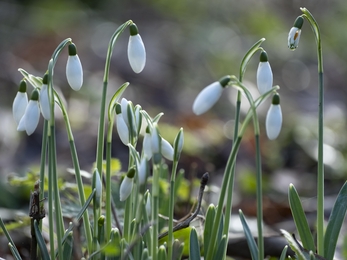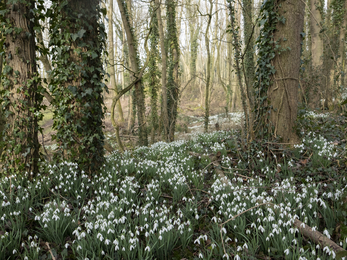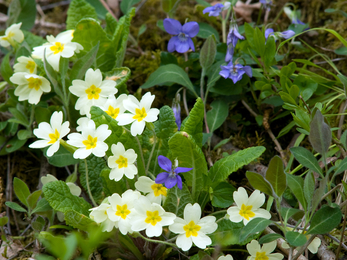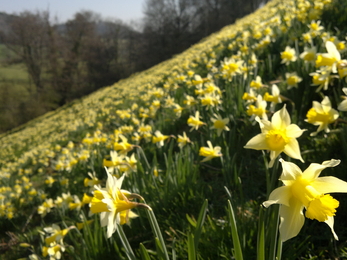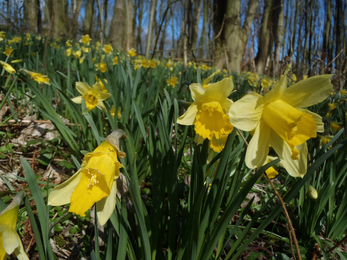It’s that exciting time of year, when the temperature is fickle but the days are growing longer. Soon, we’ll be talking about the spring equinox and anxiously awaiting the weekend in March when we finally set our clocks forward – trading that precious hour of sleep for some extra light.
Despite it still being winter, I can feel the buzz of anticipation, not in the cool air, but determinedly starting to push its way out of the ground. It’s a great time to look down in wonder at what’s popping up out of the cold earth. In fact, it tends to be our smallest plants and critter friends that start to signal spring first. Here are some things to look out for while awaiting spring to do its thing.
Snowdrops: These pretty little white flowers often seen in January and February are a truly wondrous sight. You tend to find them in broadleaved woodlands where there is more light in the winter without foliage cover, and damp soil.
While you may see a bee or two visit these flowers on an unseasonably warm day, they actually do not naturally spread by pollination, because they bloom before many of our pollinators emerge. Instead snowdrops spread naturally through a process called bulb division, by which plant bulbs naturally produce offsets, or baby bulbs, next to the parent bulb. Sometimes these bulbs can take several years to grow, but under the right conditions, snowdrops will slowly spread this way. Next time you see a pretty carpet of snowdrops, take a moment to appreciate the magic that’s happening under the soil’s surface.


